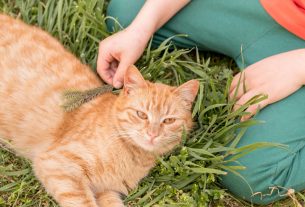You love animals. You’ve never had a fearful animal. You can’t even turn on the vacuum cleaner because it’s already hidden. You can’t even leave your front door for a walk. You never thought you would have to go through this. But here you and your furry friend are: you both don’t know what to do!
As you know, at Pet Anjo we do walks (the famous dog walker) with dogs. It is very common, therefore, to find clients who are literally desperate because, despite their desire to offer the best exercise for their pets, they fear for their safety and well-being. Who has never trembled when they saw a skateboarder approaching their fearful dog? In São Paulo, then, there are no cars, motorbikes, noise… But, stay calm! No shock therapy, rehabilitation period at the charming of animals. You will need a lot of desire, dedication, patience, modern knowledge about animal behavior and, of course, lots of love for your friend!
Oh, and this goes for any animal species (including for human animals)!
After all, why are they so afraid?
Animals can feel fear for many reasons:
- genetic factors: maternal prenatal stress and hereditary elements related to race,
- the lack of socialization in the first months of life: is the most common reason, highly related to fear of strange people, other dogs and cats and new environments
- traumatic experiences: fear events so intense that they begin to influence the animal’s future behavior
- abuses: animals that have experienced physical and emotional abuse, such as kicking, slapping, pulling, etc.
- fear learned by association: for example, the animal needs to wear a muzzle at the vet (which it is already afraid of), from that day on it starts to be afraid of the muzzle too, as it was associated with fear of the vet
- dor: very common in elderly animals, or animals with joint problems, locomotor problems, hypothyroidism, blind, deaf animals, etc.
And, if not worked on, fear can evolve into defensive aggression, based on fear, after all at some point the animal will need to defend itself against the threat (and yes, a skateboard or a child can seem very threatening to an animal) .

And how do you help them?
Regardless of the reason, there are steps you can take to help you overcome your fear. It is important to emphasize that they will not perform miracles. Persistence (always doing it) and consistency (always doing the same thing) will be key to success. The measures are:
1. With small, progressive steps:
One of the ways to help an animal that is bothered by something specific, be it adults, children, a vacuum cleaner, thunder, is through a technique called desensitization. In this technique, the animal is exposed to the stimulus that frightens it – also called a trigger – but in a gradual and systematic way, without confrontation.
If the animal is bothered by the sound of the vacuum cleaner, for example, you can start running the vacuum cleaner in one room while the dog is in the next room. Once he is comfortable with the sound at this distance, you can turn on the device when it is closest to the room, for example, near the door. And so on progressively, until the animal is comfortable side by side with the vacuum cleaner (which can take months).
Through desensitization he will learn, at his own speed, that that once frightening sound is not so bad. Never under any circumstances use shock or immersion therapy – also called flooding. Do not force the animal to confront this thing that scares it. In addition to being traumatic, it makes the problem much worse and damages the relationship of trust between you and him.
2. Teaching by association:
Pavlov’s good old experiment with the dog, the bell, food and salivation showed us that by pairing a stimulus that previously told us nothing with a stimulus that already had a value, we were able to manipulate triggers for emotions. In other words, by pairing the scary thing with something the animal really likes, we can help it stop feeling afraid.
Imagine that your dog is afraid of cars passing by him (a very common scenario for a dog walker): as soon as a car passes he starts barking, throwing himself at the car or moving away, crouching down and trying to hide (both are profiles of scared animals). We can help this animal by associating something pleasurable with the car. Start at a distance where the animal feels comfortable – it could be 4 meters or even 100 meters, depending on the individual. So, every time a car passes by the dog, give the animal very tasty treats. It can’t be food or something he’s already used to eating, it needs to be a new snack, very valuable for the dog. Keep offering the treats quickly, one after the other while a car is passing by. At the same time, talk to the dog in a very happy and affectionate way.
But be careful: since there are no cars passing by, the snacks and lively conversation must stop immediately. By teaching the dog that good things happen when cars pass by, and that good things stop happening when there are no cars passing by, a change will occur in the dog’s emotional response. Now he will think: “Oh, how good, a car! Where’s my snack?” instead of “Oh no, a car! Go away, car!” Notice the difference? Something that used to be bad becomes good!
It is important, however, not to start this exercise on the busiest street in your city, that is, at the highest intensity! We always need to help the dog get it right, and we need to prepare ourselves for that. In other words, start the exercise in a quieter place and then, as you notice small changes in the animal’s behavior, increase the intensity of the exercise, going, in this example, to busier places. This could take months, don’t be in a rush – take your time.
3. Without going past the trigger:
Whenever we work on desensitization (item 1) and counter-conditioning (item 2), the animal Never He must feel so uncomfortable that he wants to run away, scratch, bark, throw himself or show any sign of fear. We always want to work below that line. To know whether or not we have crossed this line, however, we need to know how to read animals’ body language. Dogs, cats, rodents, rabbits… They all give us very subtle signals when they are scared (We will soon have more posts just on this topic).
So, if you are doing any of these exercises with an animal and it shows any signs of fear or discomfort, stop and take a few steps back, to the distance that does not trigger the dog’s reaction. Quickly end the interaction with something positive and pleasant and, next time, start the session in previous steps, with greater distance and lower intensity.
4. For milder discomforts: getting used to it
If the animal is simply embarrassed when it is around other dogs or people, what you can do is take it everywhere you go. But be careful: this can only be done if the animal’s stress level is light. And even then, you must be very careful not to place the animal in oppressive situations, such as crowds of people, the busiest street in the city, the park on a Sunday, etc. Start with lower intensity. AND Never allow unfamiliar people to approach the dog, possibly making it uncomfortable. Remember: always take small, progressive steps. This way the animal will have the chance to get used to being around people and other animals and create positive associations.
5. Seek professional help
It is important to note that these recommendations are only for animals that feel mild to moderate fear of specific things. If your animal has a phobia (extreme fear reaction, disproportionate to the trigger stimulus), or fear of many things, or if you have tried the measures above and had no results, it is highly recommended that you look for a trustworthy professional in the field of animal behavior. This person will be able to assess the animal’s issues, investigate exactly what triggers the fear reaction, and offer support to the owner. And be very careful when choosing this professional: avoid those who claim that you have to be the leader of the pack, alpha, dominant, those who use punitive techniques and aversive stimuli such as the use of choke collars and shock collars. On our dog walkers we don’t use any of that: just modern techniques with a scientific basis!
It is common for owners not to worry as much about issues related to fear as they are about destroying things at home or excessive barking. But fear can be the root of these behaviors and must be taken very seriously by the tutor. Furthermore, the state of chronic stress in which a fearful animal lives can cause several health-related problems, including the immune system. Not to mention the high probability of fear turning into aggression, which is the topic for a future post…

Sign up for our newsletter and stay up to date with exclusive news
that can transform your routine!
Warning: Undefined array key "title" in /home/storelat/public_html/wp-content/plugins/link-whisper-premium/templates/frontend/related-posts.php on line 12
Warning: Undefined array key "title_tag" in /home/storelat/public_html/wp-content/plugins/link-whisper-premium/templates/frontend/related-posts.php on line 13




